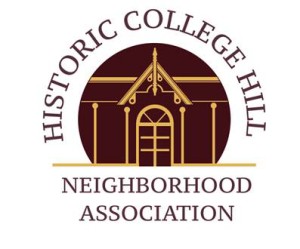 November 5, 1998 Maryville City Council voted on second reading an ordinance establishing the College Hill Historic Overlay Zone. Boundaries of the zone have been changed slightly since the fall Vision 2020 planning meetings attended by many are residents, but other elements, including design guidelines and a moratorium on additional multiple-family residential and commercial development, remain the same. More information and copies of the design guidelines are available from the city planning office.
November 5, 1998 Maryville City Council voted on second reading an ordinance establishing the College Hill Historic Overlay Zone. Boundaries of the zone have been changed slightly since the fall Vision 2020 planning meetings attended by many are residents, but other elements, including design guidelines and a moratorium on additional multiple-family residential and commercial development, remain the same. More information and copies of the design guidelines are available from the city planning office.
The Historic College Hill Neighborhood Association met on Tuesday, December 8, 1998, at the Chilhowee Club, to elect officers. Jeff Brooks, President; Joan Worley, President-Elect; Sue Wyatt, Secretary-Treasurer; and Wally Lewis, Historian. Also at the meeting, members empowered Duncan Bennett to find out what’s happening with the old railway right-of-way that runs through the neighborhood between Miller/Clarion and Bryant Lane/Goddard. For the present, we are operating under the bylaws adopted by the Historic College Hill Neighborhood Association in 1991. Working committees and their conveners are Communications, Trish Daugherty; Meetings, Judy Siver; Newsletter, Karen Kenst; Nominating, Jeff Brooks,; and Watchdog, Ken Brown. At a February 2nd meeting of the executive committee (officers and conveners), Brooks appointed a task force to suggest revisions to the by-laws.
The past is prologues indeed. The 1998 historic overlay zone can trace its roots to 1982 and an ambitious project of the Blount Historic Trust. One thing led to another, according to Marty (Mrs. Henry) Calloway, who provided help with the following reconstruction of events to date.
- In 1982 the Blount County Historic Trust (BCHT) secured a $25,000 matching grant from the Tennessee Historic Commission to fund a survey of some 4,500 Blount County properties over 50 years old. The actual survey was done by UT students under the leadership of John Morgan, a graduate student.
- 1986 saw BCHT’s publication of Back Home in Blount county: An Illustrated History of Its Communities, under the general editorship of Herma Cate and Marty Calloway. Project directors were Anne Anderson and Sarah McNiell, and many other writers and photographers participated.
- Through a grass roots citizen effort, the Indiana Avenue Historic District was added to the National Register of Historic Places on July 25, 1989.
- The Historic College Hill Neighborhood Association was organized, with bylaws and elected officers, in the early 90s. The group proposed and successfully lobbied the City of Maryville to appoint the seven-member Historic Zoning Commission.
- In the spring of 1998 the City of Maryville planning office sponsored neighborhood meetings, involving around 75 residents in a planning process, Vision 2020, that culminated in the historic overlay zone.
Other members of our community, some who lived in the are, some who did not, worked to bring recognition to the neighborhood. The historic overlay zoning is another punctuation point on a continuum of College Hill Recognition and cohesiveness.
